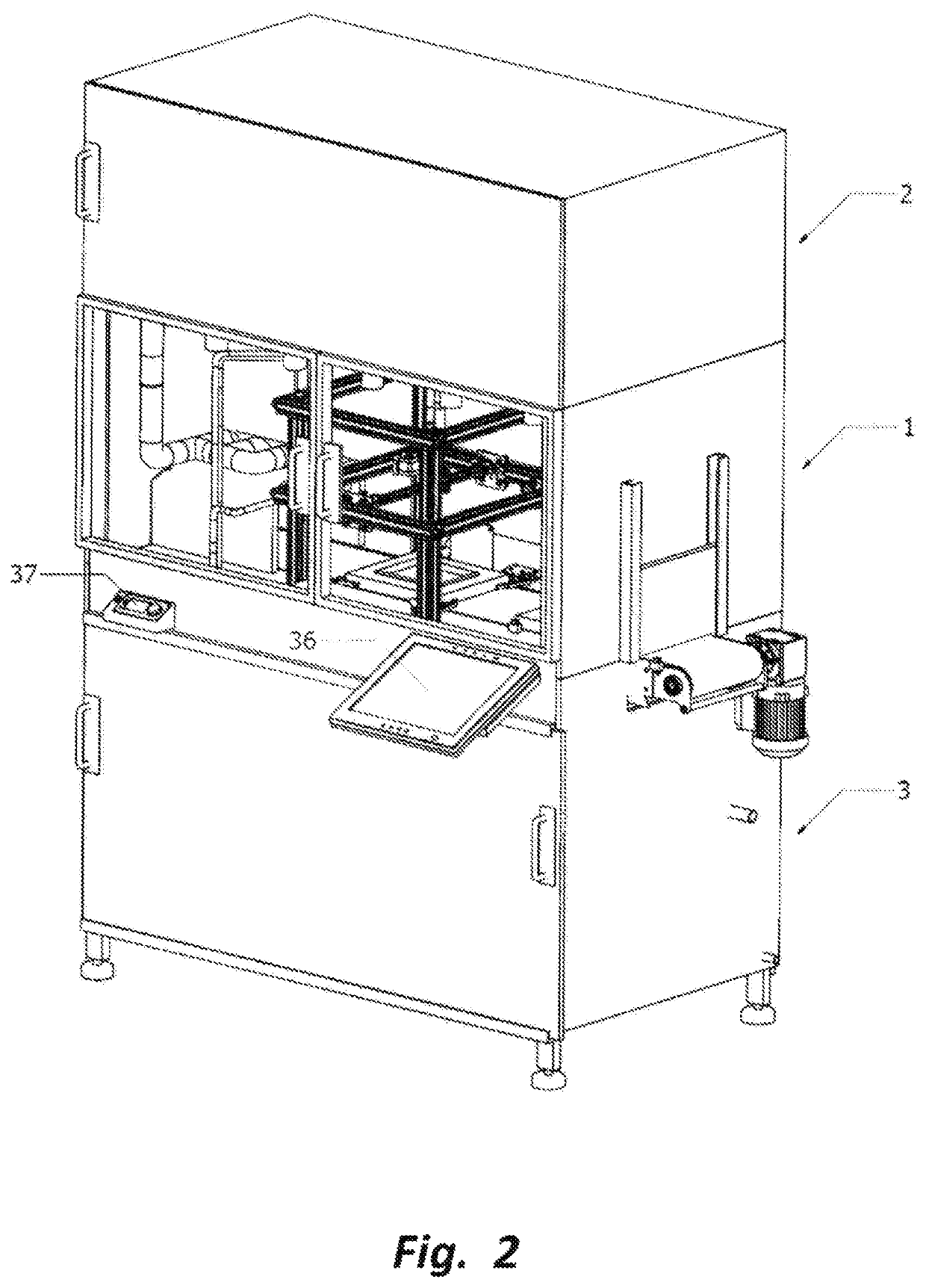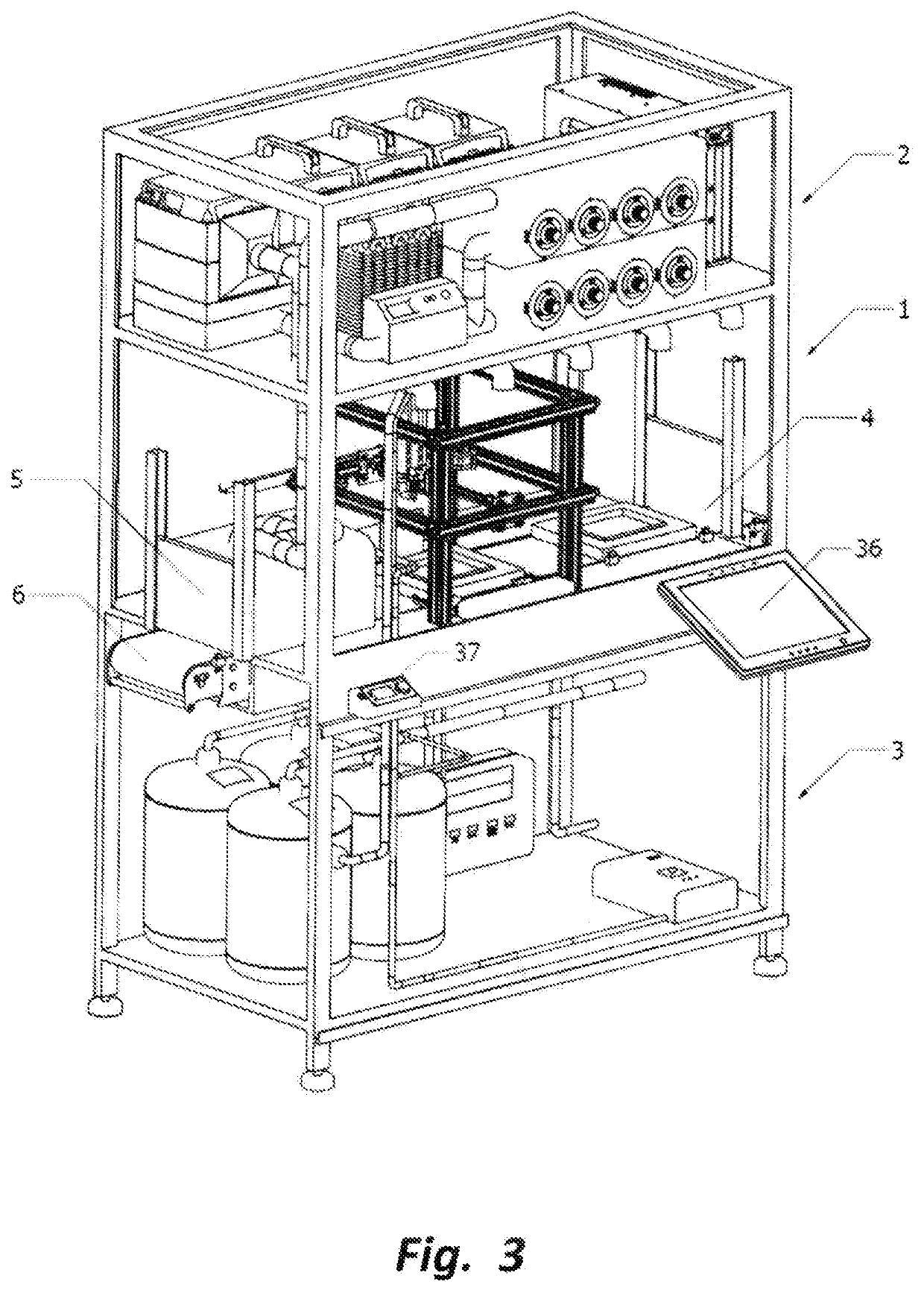Three dimensional printing of biotic material originated from swiftlet edible bird nest
a technology of biotic materials and nanostructures, applied in the field of three-dimensional printing of biotic materials originated from swiftlets edible bird nests, can solve the problems of complex application of 3d printing of biotic products, high cost of biotic materials, and inability to meet the needs of food processing, etc., to achieve the effect of improving quality, yield, capacity, productivity and cost, and simplifying the moulding
- Summary
- Abstract
- Description
- Claims
- Application Information
AI Technical Summary
Benefits of technology
Problems solved by technology
Method used
Image
Examples
example # 1
Example #1
[0076]According to example #1 of present invention as shown in FIG. 17, the method of printing biotic material based object from biotic material originated from swiftlet edible bird nest comprising of the following steps:[0077]a) preparing a fluid biotic material comprising of a blend of water and swiftlet edible bird nest particles;[0078]b) loading said fluid biotic material into a fluid biotic material reservoir 35 and connecting to a fluid biotic material deposition nozzle 17;[0079]c) setting up a printing programme by providing parameters of an object for printing or depositing;[0080]d) loading a plurality of deposition platforms 10 onto a conveyor at entry gate 4;[0081]e) transferring said deposition platform 10 to a waiting station 7;[0082]f) activating said printing programme at a Man-Machine Interface Unit (MMIU) 36;[0083]g) transferring said deposition platform 10 from said waiting station 7 to a depositing station 8;[0084]h) holding said deposition platform 10 at...
example # 2
Example #2
[0101]According to example #2 of present invention as shown in FIG. 18, the method of printing biotic material based object from biotic material originated from swiftlet edible bird nest comprising of the following steps:[0102]a) preparing a fluid biotic material comprising of a blend of water and swiftlet edible bird nest particles;[0103]b) loading said fluid biotic material into a fluid biotic material reservoir 35 and connecting to a fluid biotic material deposition nozzle 17;[0104]c) setting up a printing programme by providing parameters of an object for printing or depositing;[0105]d) loading a plurality of deposition platforms 10 onto an extended loading conveyor 45 and an enclosed returning conveyor system 44;[0106]e) transferring said deposition platform 10 to a waiting station 7;[0107]f) activating said printing programme at a Man-Machine Interface Unit (MMIU) 36;[0108]g) transferring said deposition platform 10 from said waiting station 7 to a depositing station...
example # 3
Example #3
[0132]According to example #3 of present invention as shown in FIG. 19, the method of printing biotic materials based objects from biotic materials originated from swiftlet edible bird nest comprising of the following steps:[0133]a) preparing a fluid biotic material comprising of a blend of water and swiftlet edible bird nest particles;[0134]b) loading said fluid biotic material into a fluid biotic material reservoir 35 and connecting to a fluid biotic material deposition nozzle 17;[0135]c) setting up a printing programme by providing parameters of an object for printing;[0136]d) loading a plurality of deposition platforms 10 onto an extended loading conveyor 45 and an enclosed low humidity returning conveyor system 50;[0137]e) transferring said deposition platform 10 to a waiting station 7;[0138]f) activating said printing programme at a Man-Machine Interface Unit (MMIU) 36;[0139]g) transferring said deposition platform 10 from said waiting station 7 to a depositing stati...
PUM
 Login to View More
Login to View More Abstract
Description
Claims
Application Information
 Login to View More
Login to View More - R&D
- Intellectual Property
- Life Sciences
- Materials
- Tech Scout
- Unparalleled Data Quality
- Higher Quality Content
- 60% Fewer Hallucinations
Browse by: Latest US Patents, China's latest patents, Technical Efficacy Thesaurus, Application Domain, Technology Topic, Popular Technical Reports.
© 2025 PatSnap. All rights reserved.Legal|Privacy policy|Modern Slavery Act Transparency Statement|Sitemap|About US| Contact US: help@patsnap.com



